Investing is the way to grow wealthy, but you can’t invest if you don’t have the cash. In FIREd by Fifty, I provide all you need to know to manage the cash you already make to allow you to invest. Then, I show you how to invest to generate an income stream. It takes time, but start today and you’ll be in a much better financial place in a few years, then you could be financially independent, meaning you make as much or more from investing as you do from your job, in twenty to thirty years. You, too, could be Financially Independent, Retired Early (FIREd)
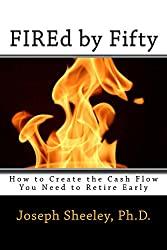
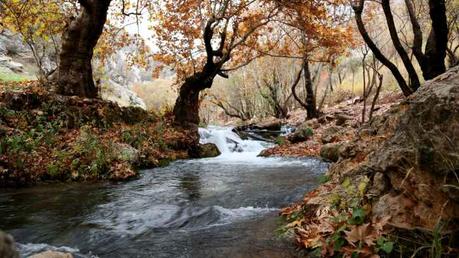
Photo by Nashwan Guherzi on Pexels.com
" data-orig-size="1880,1058" sizes="(max-width: 723px) 100vw, 723px" data-image-title="river inside forest near brown leaf trees" data-orig-file="https://smallivy.files.wordpress.com/2022/02/pexels-photo-696941.jpeg" data-image-description="" data-image-meta="{"aperture":"0","credit":"","camera":"","caption":"","created_timestamp":"0","copyright":"","focal_length":"0","iso":"0","shutter_speed":"0","title":"","orientation":"0"}" data-medium-file="https://smallivy.files.wordpress.com/2022/02/pexels-photo-696941.jpeg?w=300" data-permalink="https://smallivy.com/2022/02/19/how-investing-is-like-tubing-down-the-river/pexels-photo-696941/" alt="" srcset="https://smallivy.files.wordpress.com/2022/02/pexels-photo-696941.jpeg?w=723 723w, https://smallivy.files.wordpress.com/2022/02/pexels-photo-696941.jpeg?w=1446 1446w, https://smallivy.files.wordpress.com/2022/02/pexels-photo-696941.jpeg?w=150 150w, https://smallivy.files.wordpress.com/2022/02/pexels-photo-696941.jpeg?w=300 300w, https://smallivy.files.wordpress.com/2022/02/pexels-photo-696941.jpeg?w=768 768w, https://smallivy.files.wordpress.com/2022/02/pexels-photo-696941.jpeg?w=1024 1024w" class="wp-image-21434" data-large-file="https://smallivy.files.wordpress.com/2022/02/pexels-photo-696941.jpeg?w=723" />Photo by Nashwan Guherzi on Pexels.comIn writing my latest book, Investing to Win, I had a realization. I realized that optimal investing is actually very simple. (By “optimal investing,” I mean investing in a way to give yourself the maximum chance of the maximum return.) People make it really complicated and you can easily get caught up in the minutia of trading and investing, which is why people make huge salaries managing money for others, but it doesn’t need to be that way.
Optimal investing can be summed up very simply:
Invest where you can get the highest returns, but also where returns are predictable over the time period you have to invest.
Okay, that was succinct and really did contain the secret to life, the universe, and everything, at least when it comes to investing. But there was a lot there, so let’s see if we can unpack it for you. To do so, let’s use an analogy with which you’re hopefully familiar. Picture yourself on a tube in a river….
(Note, if you click on a link in this post and buy something from Amazon (even if you buy something different from where the link takes you), The Small Investor will receive a small commission from your purchase. This costs you nothing extra and is the way that we at The Small Investor are repaid for our hard work, bringing you this great content. It is a win-win for both of us since it keeps great advice coming to you (for free) and helps put food on the table for us. If you don’t want to buy something from Amazon or buy a book, how about at least telling your friends and family about our website as a great place to learn about investing and personal finance. Thanks!)
Learn to handle your cashflow like a pro with my last book, FIREd by Fifty
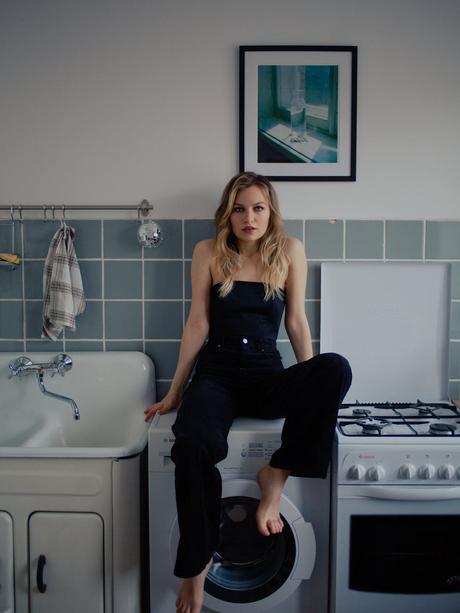
Photo by Polina Chistyakova on Pexels.com
" data-orig-size="975,1300" data-image-title="woman sitting on washing machine" data-orig-file="https://smallivy.files.wordpress.com/2022/02/pexels-photo-11006505.jpeg" data-image-description="" data-image-meta="{"aperture":"0","credit":"","camera":"","caption":"","created_timestamp":"0","copyright":"","focal_length":"0","iso":"0","shutter_speed":"0","title":"","orientation":"0"}" data-medium-file="https://smallivy.files.wordpress.com/2022/02/pexels-photo-11006505.jpeg?w=225" data-permalink="https://smallivy.com/2022/02/19/how-investing-is-like-tubing-down-the-river/pexels-photo-11006505/" alt="" class="wp-image-21442" data-large-file="https://smallivy.files.wordpress.com/2022/02/pexels-photo-11006505.jpeg?w=723" />Photo by Polina Chistyakova on Pexels.com – This is what you get when you search for “Tire Inner Tube” on Pexels….Tubing down the river
Rivers come in different forms, ranging from the Pouder River with it’s rapids and waterfalls near Ft. Collins, Colorado to the Mississippi River, slowly lumbering past Missouri and Tennessee down to the Gulf of Mexico. The small, fast river can get you downstream in a hurry, but it also has eddies and turbulence, making it difficult to predict how fast the water will be moving at any given time or even if the water will be moving downstream. Sometimes, in a eddy, it moves upstream for a time!
Pouder River near Ft. Collins, Colorado
The large, slow river is more predictable. It doesn’t go anywhere as fast as the small, turbulent river, but you know that you will be going downstream almost all of the time if you were tubing on this river. Even if you were to tube for only a short period of time in the big river, you would almost be guaranteed of ending up downstream from where you started. It is entirely possible that if you were tubing on the small river for ten seconds that you’d be way farther downstream than you would after ten seconds on the big river, but you might not make much progress at all or even go upstream. The big river is the sure thing. The small river has the possibility of larger gains but at a higher risk.
The mighty but lumbering MississippiA wager
Let’s now say that you and a friend make a bet where he will pay you a dollar for every yard you can get downstream in a tube over a period of time. But if you don’t have an average speed of at least 2 miles per hour, you’ll need to pay your friend $1000. You get to pick a river, will get dropped off at a random point, then your progress over a fixed period of time determined to see how far you get and your average speed. Which river would you pick?
Well, it would depend on two factors:
1) How long you had to ride the river and
2) How important it was for you to win the bet.
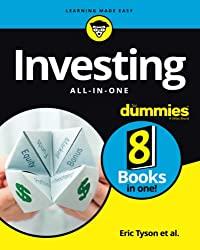
First, let’s say that you only had 10 seconds to tube. You might first think of tubing down the fast river since its average speed is a lot faster than the slow river, so you might go a long distance in the 10 seconds you have. But while you’d go a lot faster downstream some of the time, there would also be times where you would be trapped in an eddy and not traveling downstream at all. You might even end up going upstream! Over such a short period of time, you would be taking a risk of losing and needing to pay your friend the $1000 if you chose the fast river.
If you chose the slow and steady river, you would know that you were likely to get at least a little distance downstream. You would never travel very fast, but you would almost always be making progress downstream. Your rate of progress would also be fairly predictable since in most places the river would be traveling downstream at about the same speed. If you knew that the average speed of the big river was 3 miles per hour, you would be almost assured of at least winning some money if you chose the big river.
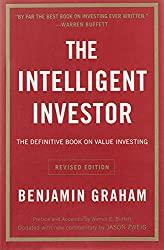
Choosing the slow river for short periods of time
Over a short period of time, the small river offers the potential to get a lot farther and make a lot more money, but the slow river is the sure choice to not lose money and maybe make a little. The choice you would make would then depend on how important it was for you to be assured of making at least some money not losing your bet. If you really didn’t need the money and could easily make the $1000 back if you lost it, you might still choose the fast river. But if that $1000 was your rent money and you’d be out on the street if you lost it, the slow river would be the obvious choice. Sure, you might get farther on the small river, but there was a good chance that you might not. Over such a short period of time, the risk is too great if you really can’t afford to lose the bet.
The slow river would also be the better option just in terms of likelihood of making money. Your chances of making at least some money with the large river would be significantly higher than with the small river. While sometimes you’d make much better returns with the small river, often the steady return with the large river would be greater than the unpredictable return from the small, so the large river be the better bet on average.
Well, if you were only going to tube for a few minutes, you might decide that the slow and steady river was the best choice. You would almost be assured of traveling downstream at least a little, and while the average speed on the river was significantly less than that on the fast river, it would be far more predictable.
Over long period of time, go fast
If you had several hours to float, you could still take the big river. It would take you downstream and you would know that your average speed would be greater than the minimum. But you would also know that if you waited long enough on the fast river, you’d move downstream and that the average rate would be faster than it was with the big river. In fact, you would find that if you waited at least a minimum amount of time (like an hour or two), you could predict how far downstream you’d be within a range since the you would pass through about the same number of fast and slow spots regardless of where on the river you started. The longer you were floating, the more likely it would be that you’d travel upstream a ways for a while, but you would also know that you’d pass through several chutes where you’d speed downstream.
If the average speed on the fast river was 10 miles per hour over long periods of time, it would be the better choice than the big river. Maybe after an hour you would only be averaging 8 miles per hour for the particular stretch of river you were on, but it would still be significantly better than the 3 miles per hour you would average on the big river. Your speed would still not be totally predictable, but all that is needed is for you to have enough time to know that your average speed would be greater than it would be on the big river. And the longer you stayed on the small river, the closer you would get to the average speed. All you would be doing by choosing the big river is giving up money.
If you’re flexible, also go fast
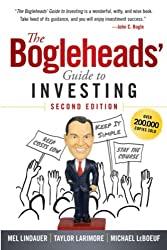
You might also be able to use the small river for shorter periods of time if you were flexible on when you needed to get out. If you didn’t need to get out after precisely ten or twenty seconds, you could use your progress on the river to choose when to get out. It would be entirely possible that you would shoot downstream as soon as you entered the river and get a whole lot farther than you could in the big river, so you might get out after ten seconds. But if you were dropped off in a place where it was stagnant or you ended up going upstream right after you entered the water, you could just stay in the river and wait a little longer for a better time to exit. You would know that the pace of the river would pick up if you just waited long enough, so you could use your flexibility to pick a good time to exit.
Applying the analogy to investing
Like rivers, investment assets (stocks, bonds, REITs, etc…) come in different forms as well, from the wild internet start-up stock to the calm, predictable bank CD. Just as you can get a lot farther a lot faster on a wild river coming out of the mountains than you will on a wide, slowly drifting river, you have the opportunity to make a lot more in a small stock than a bank CD. But your returns in the small stock will be very unpredictable over the next day, week, or year, where the return on a bank CD can be predicted with pinpoint accuracy.
So, if you can you want to get the higher returns from the small stock, which can double your money in a month or two. But if you really need to buy a new car next year, you could very easily lose money since the small stock could be down 50% when you’re ready to buy the car. This means that you’d need to stick with the bank CD. Even though you might only get 0.25% interest per year in the CD versus maybe 100% in the small stock, you know the money will be there in a year and you know how much you’ll have, down to the penny.
If you were investing for retirement in 30 years, however, and you put your money in the bank CD, it would take 288 years for your money to double. In fact, you’d actually be losing money if you invested in the CD since you’d be gaining 0.25% in interest but losing an average of 3% to inflation per year. But the long-term return if you buy several small stocks is between about 7 and 15% per year, so if you bought a couple dozen small stocks and held onto them, your investment would double three or more times over the time period. An investment of $10,000 would turn into $80,000, $150,000, or more. The exact amount isn’t predictable down to the penny like it would be with the bank CD, but it can be predicted within a range and the range is way more than you’d get from the bank CD. It therefore makes sense to buy the portfolio of stocks instead of putting your money in the bank.
So, over a short period of time, the portfolio of small stocks would be like the wild river with unpredictable returns. If we were only investing for a short period of time, and especially if we really needed the money within that time, it would make sense to go with the bank CD. The bank CD is the big river that lumbers along at a predictable pace.
If we were investing for a long period of time (at least 5 to 10 years), or if we could be flexible about when we took the money out, the portfolio of small stocks would be the place to be. The average return would be greater than would be the bank CD. If we had enough time to invest to be guaranteed of getting that average return or something close to it, the portfolio of small stocks would be the better investment.
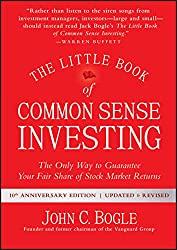
Why a portfolio of small stocks?
Notice that instead of buying a single small stock, we bought a portfolio containing several small stocks. This could be stocks we choose ourselves and buy or a mutual fund that buys several stocks for us. While it is true that a single small stock can have much larger returns than a portfolio (look at buying Amazon back in 2000 versus buying a small-cap index fund), many small stocks go nowhere or even go bankrupt and cease to exist. This means that if we were to choose one (or even two or three) small stock(s), we would not have the guarantee of higher returns regardless of how long we had to invest. It is better to hold a single small stock for ten or twenty years than to hold it for one year, but there would still be a significant risk of losing money. Our river might lead to a sink hole and end.
By buying several stocks in a portfolio, we make sure that while some stocks may not do well, the average return for the whole portfolio will be predictable if we hold long enough. How many do we need to buy? That depends on the chance that each stock will fail or at least not provide at least the average return. We need to buy enough that we are nearly certain of having enough for those that make it to make up for those that do not. If nine out of ten are expected to do well, buying three or four might be enough. If only one out of ten does well, you might need to buy 100 or 200 to be sure of making the average return.
Want to learn a lot more about stock investing?
If you want to go from being one of the crowd to a sophisticated investor, pick up a copy of
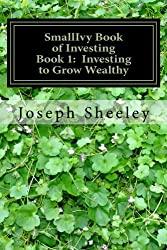
Have a burning investing question you’d like answered? Please send to [email protected] or leave in a comment.
Follow on Twitter to get news about new articles. @SmallIvy_SI
Disclaimer: This blog is not meant to give financial planning or tax advice. It gives general information on investment strategy, picking stocks, and generally managing money to build wealth. It is not a solicitation to buy or sell stocks or any security. Financial planning advice should be sought from a certified financial planner, which the author is not. Tax advice should be sought from a CPA. All investments involve risk and the reader as urged to consider risks carefully and seek the advice of experts if needed before investing.
